https://ospreypublishing.com/thisweekhistory/
Click on Essential Norman Conquest for a day-by-day reconstruction of the days between William’s landing at Pevensey on 28 September and his victory at Hastings. This website includes animated maps, 360 degree panoramas of the battlescene, 3D Norman and Saxon soldiers and 11th century soundbites.
Further reading
Essential Histories 12: Campaigns of the Norman Conquest (extract below) places the battle in its full historical context.
Campaign 13: Hastings 1066 (Revised Edition) describes the campaign and battle in greater detail.
Warrior 1: Norman Knight AD 950–1204 explores the recruitment, training and lifestyle of the invaders.
Men-at-Arms 85: Saxon, Viking and Norman examines the equipment and lifestyle of the defenders.
Elite 9: The Normans expands on the crucial and formative effect that the Normans had on Britain and Europe.
Further reading
Essential Histories 12: Campaigns of the Norman Conquest (extract below) places the battle in its full historical context.
Campaign 13: Hastings 1066 (Revised Edition) describes the campaign and battle in greater detail.
Warrior 1: Norman Knight AD 950–1204 explores the recruitment, training and lifestyle of the invaders.
Men-at-Arms 85: Saxon, Viking and Norman examines the equipment and lifestyle of the defenders.
Elite 9: The Normans expands on the crucial and formative effect that the Normans had on Britain and Europe.
The duke deployed his forces in the traditional three ‘battles’ (divisions) described by their regional affiliations. So, on his left flank were the Breton troops led by their count, Alan. In the centre were the Normans, and to the right his French allies. The front line was made up of bowmen, followed by footmen armed with spear and shield, then his cavalry were held in reserve. William needed to break up the shield-wall before sending in his knights.
At first, this seemed an unlikely result. Shooting uphill, the archers, together with some crossbowmen, saw their missiles either hit the shields of their enemies or sail over their heads. They then retired and allowed the spearmen to conduct the assault. The defending English sent down a barrage of missiles against them, described not as arrows (archers seem to have been mysteriously absent in their army) but as ’spears and weapons of every kind, murderous axes and stones tied to sticks’. The foot soldiers fell back in disorder, requiring the knights to charge up the hill. But William’s cavalry were equally ineffective against the determined English. The huscarls, with their two-handed axes, were capable of cutting through any armour and even of decapitating the knights’ horses. As a result, a general movement began to the rear, although the Bretons were blamed for starting the flight. As the left wing gave way the cry went up that William had been killed. Acting quickly to prevent a rout, the duke rode across the front of his army, his helmet raised to show his face, shouting that he would not be beaten. On the English right, many men raced downhill in pursuit of the Bretons.
Whether this was an intentional pursuit or not is uncertain, but once on the lower ground and in disorder, they found themselves counter-attacked and cut down by enemy cavalry. Some scrambled up to the top of a hillock (which can still be seen on the battlefield today) where they were surrounded and neutralised or killed.
This incident seems to have given William an idea as to how he could win the battle: by sending his cavalry against the hill and then withdrawing as if afraid. Norman sources describe two of these feigned flights which weakened the English line. As men left the shield-wall and rushed down the hill in pursuit, they were then counter-attacked on the level ground, surrounded and killed. The result of this tactic was that there were no longer enough defenders to cover the top of the ridge. As evening approached, Harold was struck in the eye by an arrow (although it was two generations later that a historian first attributed this to the duke’s ordering the archers to shoot high into the air). The English faltered, and the mounted knights drove their tired horses into gaps in the shield-wall, cutting down the defenders, Harold amongst them. The king’s death precipitated a rout and, apart from a rearguard action at a still unidentified site (‘The Malfosse’), the battle was over. A twelfth-century tradition has it that William vowed to build a monastery on the site, placing the high altar at the spot where Harold fell. This thank-offering to God became known as Battle Abbey, the ruins of which still stand on the hill.
At first, this seemed an unlikely result. Shooting uphill, the archers, together with some crossbowmen, saw their missiles either hit the shields of their enemies or sail over their heads. They then retired and allowed the spearmen to conduct the assault. The defending English sent down a barrage of missiles against them, described not as arrows (archers seem to have been mysteriously absent in their army) but as ’spears and weapons of every kind, murderous axes and stones tied to sticks’. The foot soldiers fell back in disorder, requiring the knights to charge up the hill. But William’s cavalry were equally ineffective against the determined English. The huscarls, with their two-handed axes, were capable of cutting through any armour and even of decapitating the knights’ horses. As a result, a general movement began to the rear, although the Bretons were blamed for starting the flight. As the left wing gave way the cry went up that William had been killed. Acting quickly to prevent a rout, the duke rode across the front of his army, his helmet raised to show his face, shouting that he would not be beaten. On the English right, many men raced downhill in pursuit of the Bretons.
Whether this was an intentional pursuit or not is uncertain, but once on the lower ground and in disorder, they found themselves counter-attacked and cut down by enemy cavalry. Some scrambled up to the top of a hillock (which can still be seen on the battlefield today) where they were surrounded and neutralised or killed.
This incident seems to have given William an idea as to how he could win the battle: by sending his cavalry against the hill and then withdrawing as if afraid. Norman sources describe two of these feigned flights which weakened the English line. As men left the shield-wall and rushed down the hill in pursuit, they were then counter-attacked on the level ground, surrounded and killed. The result of this tactic was that there were no longer enough defenders to cover the top of the ridge. As evening approached, Harold was struck in the eye by an arrow (although it was two generations later that a historian first attributed this to the duke’s ordering the archers to shoot high into the air). The English faltered, and the mounted knights drove their tired horses into gaps in the shield-wall, cutting down the defenders, Harold amongst them. The king’s death precipitated a rout and, apart from a rearguard action at a still unidentified site (‘The Malfosse’), the battle was over. A twelfth-century tradition has it that William vowed to build a monastery on the site, placing the high altar at the spot where Harold fell. This thank-offering to God became known as Battle Abbey, the ruins of which still stand on the hill.

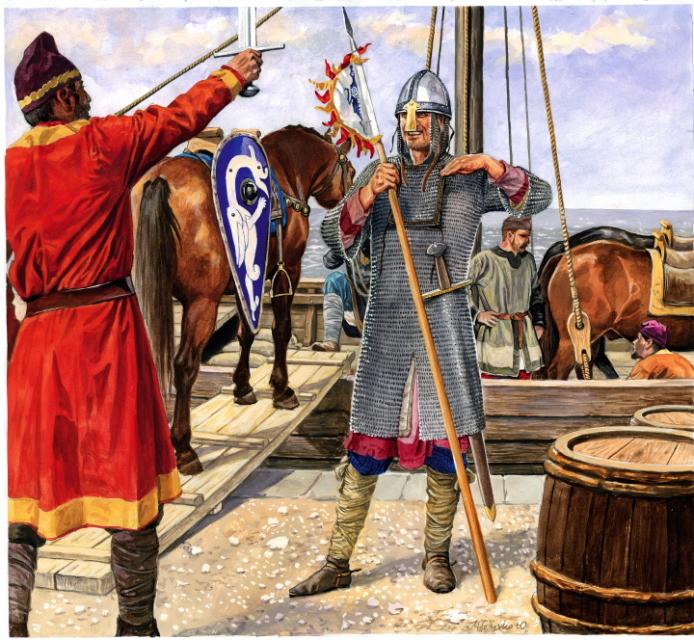

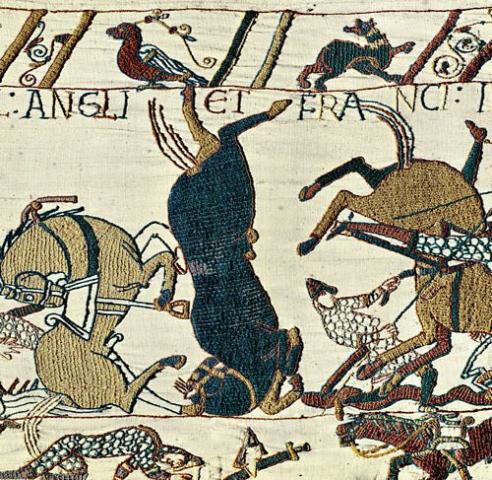
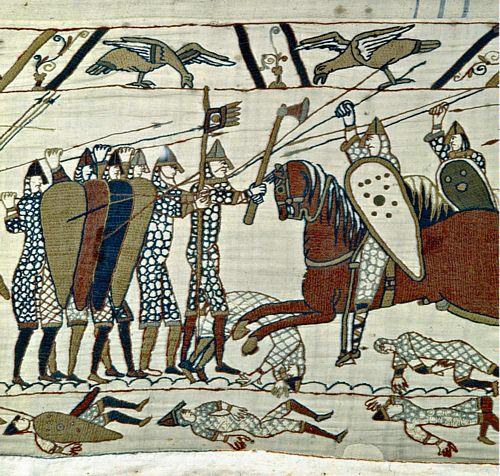

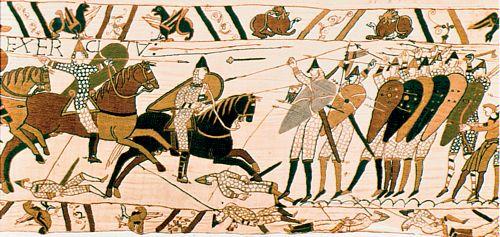
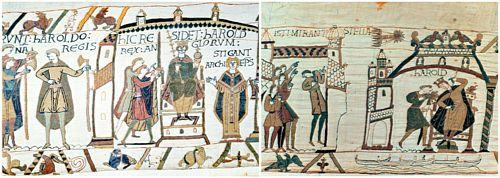
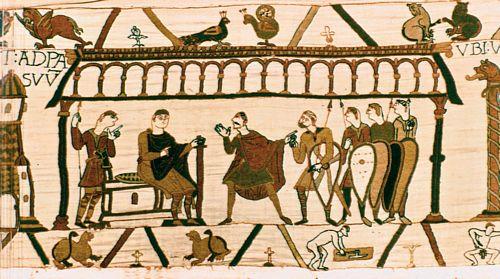

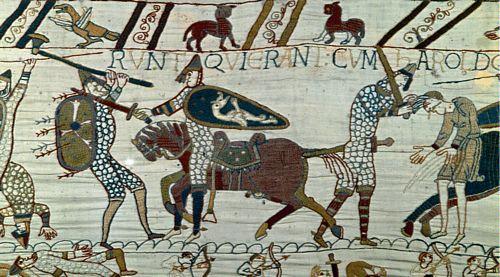
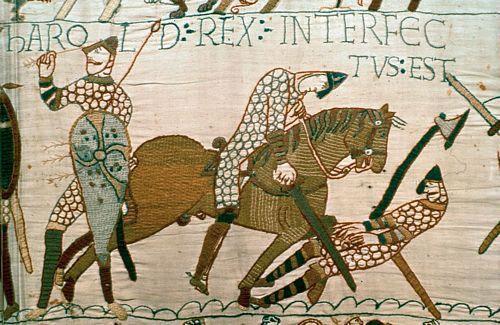
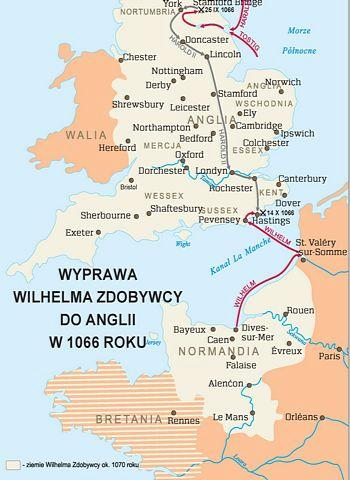

No comments:
Post a Comment